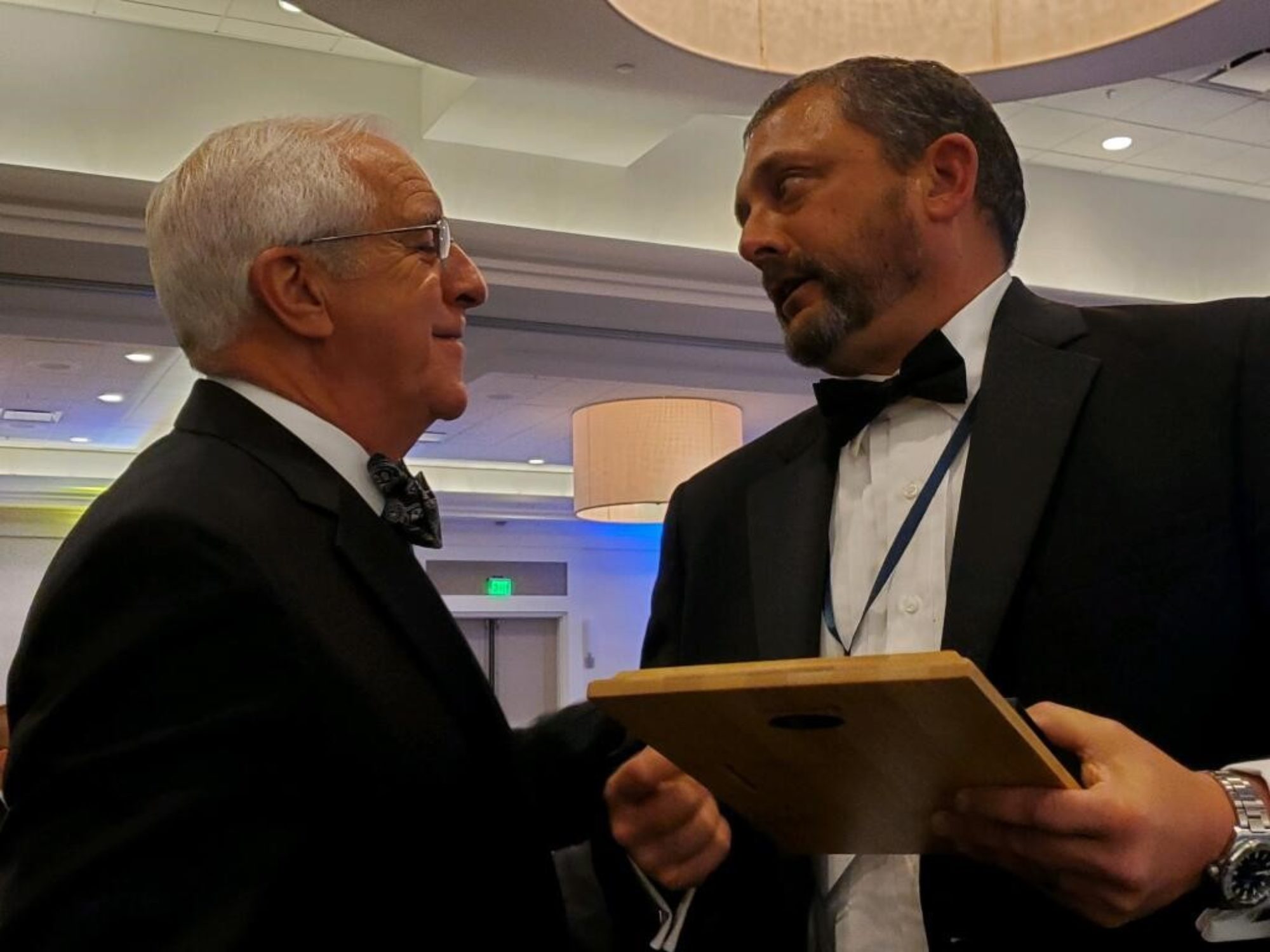Charleston’s Civic Design Center
Speaker Michael Maher discusses plans for neighborhoods after the bridges come down
MAY 3, 2005 — Rotarians learned about the City’s plans for the area underneath the existing Cooper River Bridges, as well as other initiatives undertaken by the City’s Civic Design Center. Michael Maher, Director of the Charleston Civic Design Center (CCDC), explained what the Design Center is all about, and elaborated on some of the vision that is going into the City’s East Side neighborhood, which was bifurcated by the approaches to the Cooper River Bridges.
The Civic Design Center is part of the City’s Department of Design, Develop- ment and Preservation, and focuses on the mission of promoting the future vision of the City. As the spouse of a Rotarian, Maher likened the Center’s 3- pronged mission to the Rotary 4-Way Test. The Center promotes education, collaboration, and innovation as a means for enhancing
the quality of life in Charleston through good design.
Education includes activities for citizens that educate us in urban design and how it affects the City. The activities include workshops, exhibits, and lecture series, among many other opportunities for the public to be involved in urban design issues. Collaboration refers to bringing people interested in development with those who practice in this field. The Center was designed to be a collaborative design resource, so that urban design issues can be discussed by those who are affected by them, and not just City staff.
Finally, innovation refers to such initiatives as the Urban Design Studio where the Center serves as an advocate for the public realm. This promotes creative responses to rising urban design challenges and fosters a dialogue
on today’s urban design issues.
Current initiatives undertaken by the CCDC include sidewalk dining, MUSC zoning regulations, promoting a green axis through the spine of the City, City/ FEMA height regulations, the Charleston Neck Redevelopment Plan, and the areas under the Cooper River Bridge approaches in the East Side neighborhood. This effort is one of the most ambitious being undertaken by
CCDC because it not only involves removing the existing bridge structure, but also involves “reknitting” the East Side neighborhood back together to help mend physical and psychological barriers that were imposed on this neighborhood when the Silas Pear- man Bridge was built in the 1960s.
Besides removing the old structures, the Plan includes reconnecting certain north/south streets, such as Nassau and America Streets, as well as creating an east/west connection between East Bay/Morrison and Meeting Street. Improvements are also planned for existing pub- lic space (and creating new space), drainage, street frontages, and pe- destrian access,
including bike lanes. A new connection to Meeting Street is also important to make a “grand entrance” into the City.
CCDC has held a series of public workshops to identify issues from the perspective of the citizens who live there, which has developed into a guiding set of principles. These principles are important to make sure the needs of this neighborhood are being met. The types of uses are still being determined with the help of the citizens, including housing mix, retail and neighborhood services.
Working with the CCDC, Charleston citizens now have a venue to ex- press concerns or ideas about the future of our City, so that the City can truly plan with the public in mind. For more information on the Civic Design Center, please visit www.ci.charleston.sc.us/dept/?nid=336 .
In other business. . .
Conrad Zimmerman gave the invocation and led us in the Pledge of Allegiance, and Lisa Thomas welcomed visiting Rotarians and guests. Doug Donehue of- fered Health & Happiness, and Cooper Coker announced the next Adopt-A- Highway. Jim Geffert announced the Alzheimer’s volunteer opportunity. Joan Ustin introduced our speaker Michael Maher.


